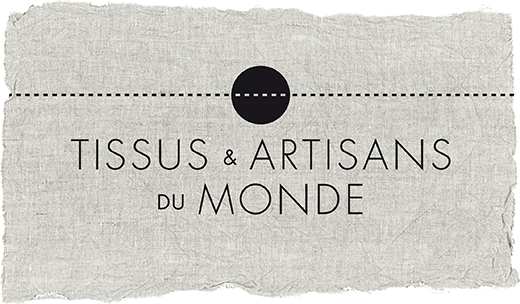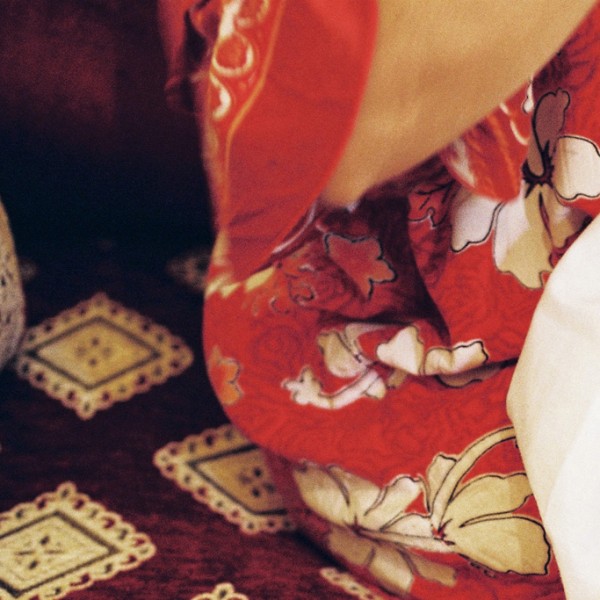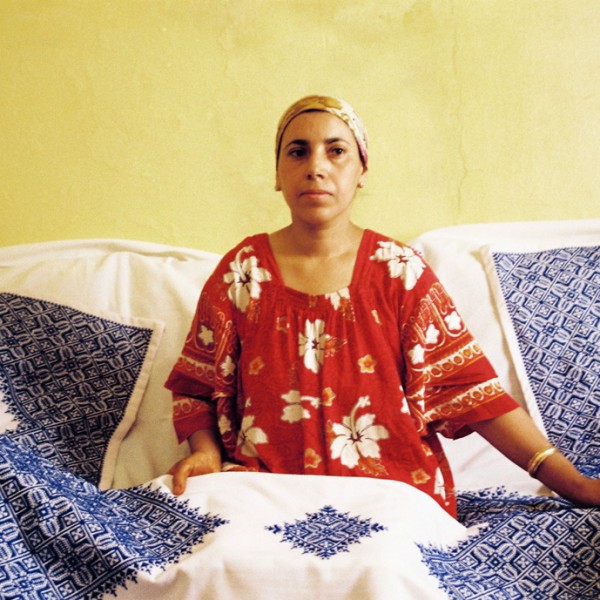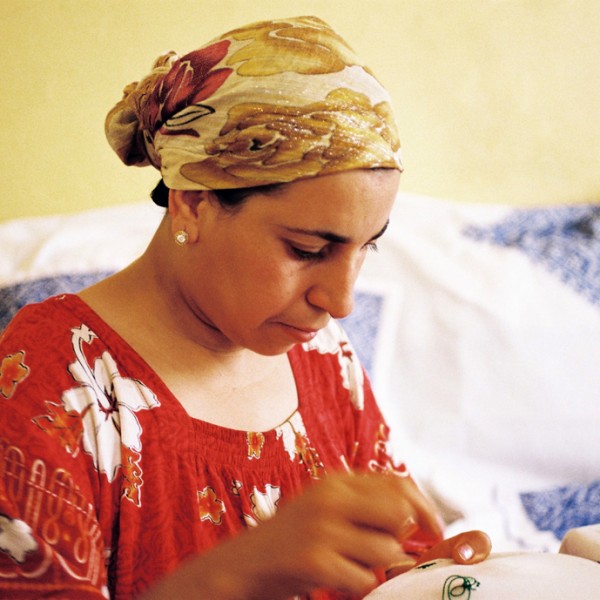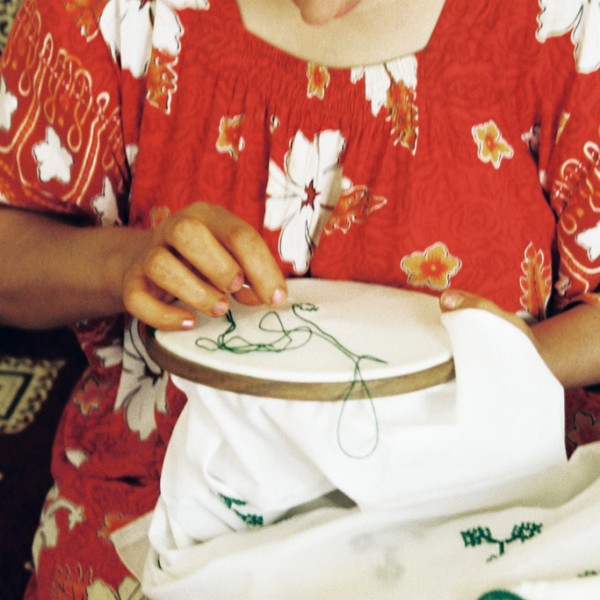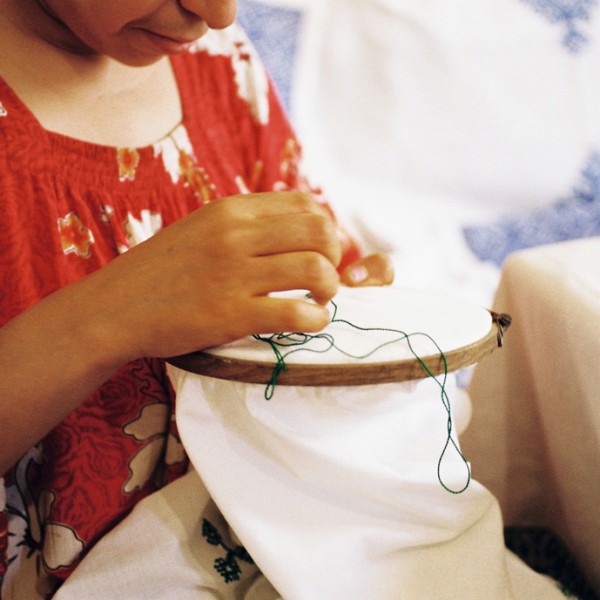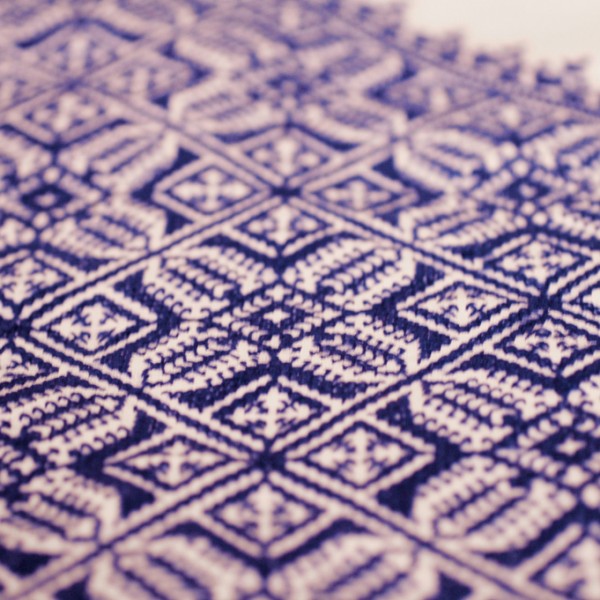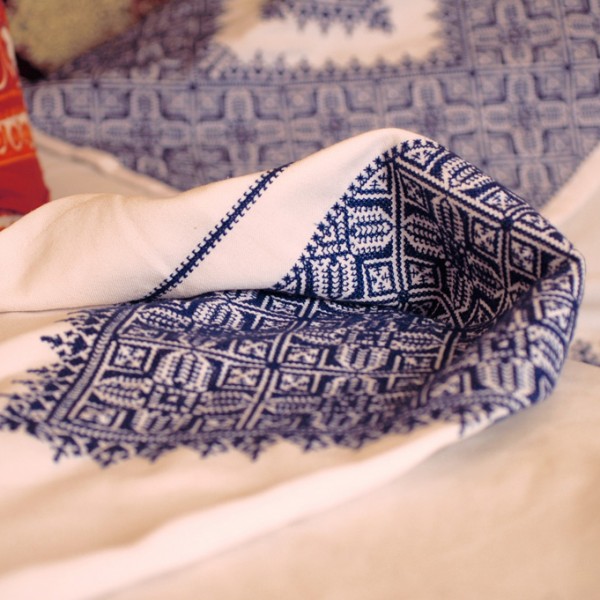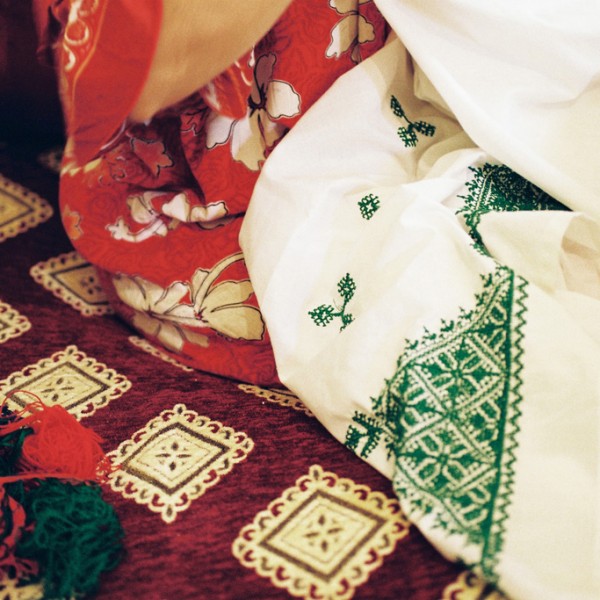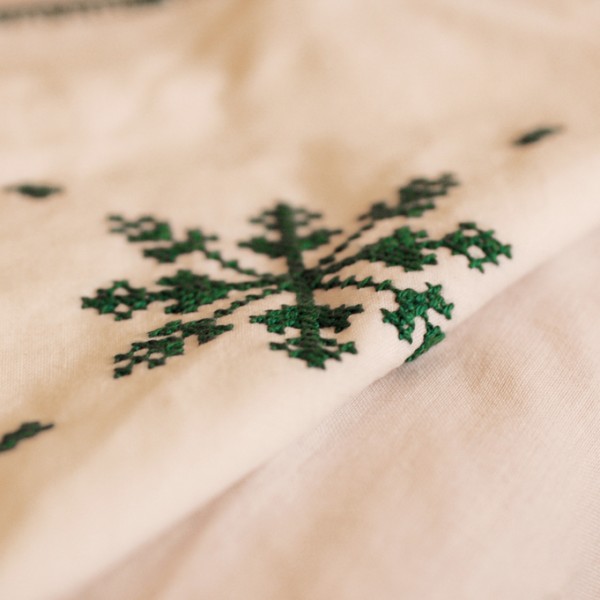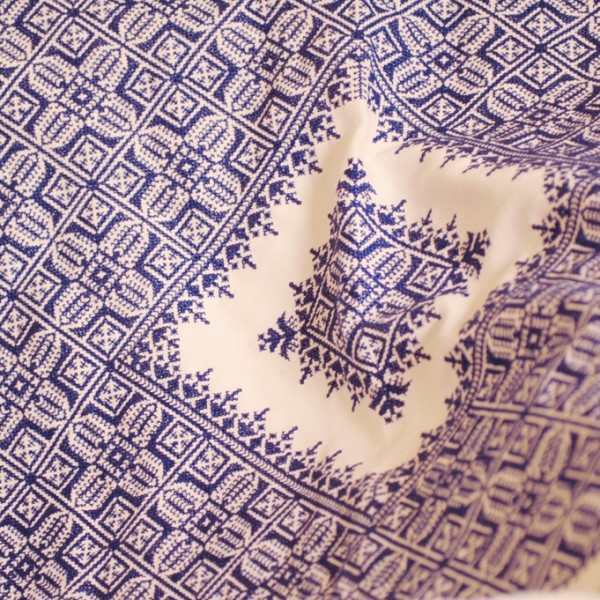Hanene has welcomed us in her living room where she has displayed the wonders she has patiently embroidered, working day after day. She lives in a small house in the city of Azrou, with her husband and children. Hanene makes embroidered pieces for wedding trousseau: bed linen, napkins, table linen, decorative pillows for her clients, and also to decorate her own house.
While she lives in the Middle Atlas region, she embroiders her products according to the city of Fez traditional way, known for its refined delicacy. She thus has been employing the Terz El Ghorza stitch, or the technic of counted stitching, to yield an entanglement of densely embroidered decorative diagonals and floral elements stylized in a geometrical way, which would appear identical on both sides. The Fez stitch is used to decorate frieze on table-cloths trims, bed linen ornaments, and it can also be placed in the center of a cushion, as an ornamental tree. You can find in these drawings the spirit of Arabesques sculptures adorning the Muslim architecture. Traditionally monochrome, in blue, black, emerald green, or dark red on unbleached linen and white cotton percale, this embroidery is sometimes treated in two or three colors, particularly for the pillows.
Hanene then has shown us a little demonstration of her talents, using needles, green yarn, and an embroidery hoop which holds the cotton cloth, her graceful hands moving around. The movie camera did intimidate her a lot. It was the first time she has ever been interviewed on how she has learned embroidery. After some time, she started speaking about the difficulty of her work, so demanding and so precise. It is a tedious craft, bad for the eyes, sore for the hands. Focus, patience and sleight of hand, these are the key words. It takes up to several months of work to produce one bedlinen set completely covered with embroidery stitches which will be sold for about five thousand dirhams, less than five hundred euros which is a very low price considering the time spent and the amount of work required. For Hanene, it represents a supplemental income to support her family and it requires her to find balance between taking care of her children, house keeping, and taking orders for the embroidery.
Back to Morocco Page
